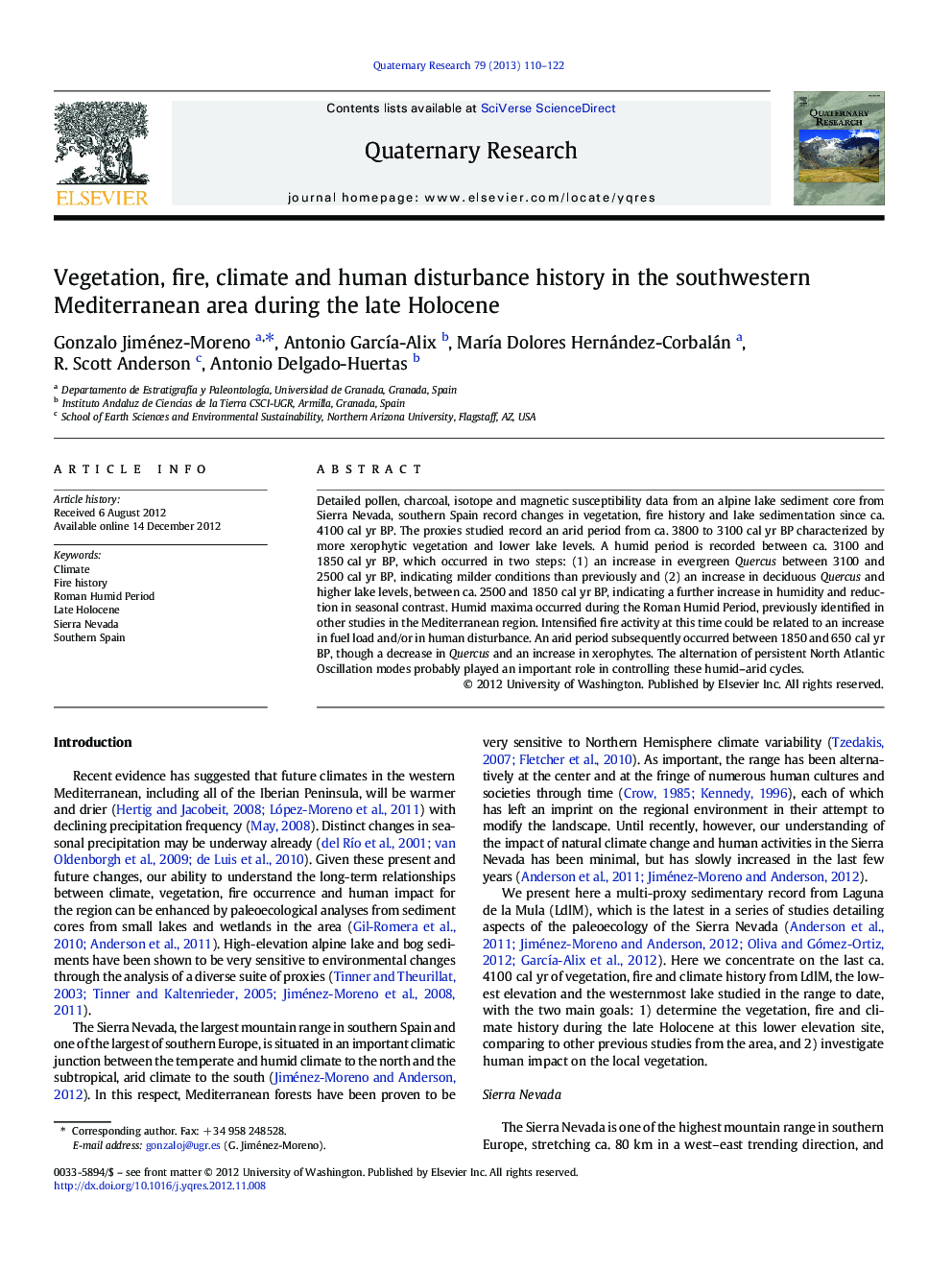| کد مقاله | کد نشریه | سال انتشار | مقاله انگلیسی | نسخه تمام متن |
|---|---|---|---|---|
| 1045477 | 944818 | 2013 | 13 صفحه PDF | دانلود رایگان |

Detailed pollen, charcoal, isotope and magnetic susceptibility data from an alpine lake sediment core from Sierra Nevada, southern Spain record changes in vegetation, fire history and lake sedimentation since ca. 4100 cal yr BP. The proxies studied record an arid period from ca. 3800 to 3100 cal yr BP characterized by more xerophytic vegetation and lower lake levels. A humid period is recorded between ca. 3100 and 1850 cal yr BP, which occurred in two steps: (1) an increase in evergreen Quercus between 3100 and 2500 cal yr BP, indicating milder conditions than previously and (2) an increase in deciduous Quercus and higher lake levels, between ca. 2500 and 1850 cal yr BP, indicating a further increase in humidity and reduction in seasonal contrast. Humid maxima occurred during the Roman Humid Period, previously identified in other studies in the Mediterranean region. Intensified fire activity at this time could be related to an increase in fuel load and/or in human disturbance. An arid period subsequently occurred between 1850 and 650 cal yr BP, though a decrease in Quercus and an increase in xerophytes. The alternation of persistent North Atlantic Oscillation modes probably played an important role in controlling these humid–arid cycles.
Journal: Quaternary Research - Volume 79, Issue 2, March 2013, Pages 110–122